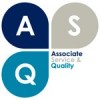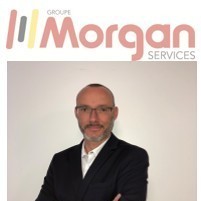Hazardous products are present almost everywhere and in all sectors: in industry for processes, lubrication, but also in construction, crafts and also in the tertiary sector, in particular for the cleaning and maintenance of buildings and technical installations!
They can have short or long term effects, some of which can be very serious: explosion, cancer…
Chemical risk management is therefore of crucial importance in all work environments where hazardous chemicals are present.
Here are some key steps to effectively manage this risk.
Identification of chemicals
Begin by identifying all chemicals used or present in the workplace. This includes chemicals used in production processes, cleaning products, solvents, gases, etc.
Risk assessment
Once the chemicals have been identified, carry out a risk assessment. This involves determining the potential hazards associated with each chemical, such as toxicity, flammability, reactivity, etc. Also assess possible routes of exposure, such as inhalation, skin contact, or ingestion. The assessment must consider the risks for health, for safety (explosion, fire, etc.) but also in relation to the installations (corrosion, etc.). Beforehand, it is necessary to determine homogeneous exposure groups.
There are various tools that help with this assessment, including Seirich from INRS; Seirich can be used by everyone but requires training and expertise to be used to its full potential (level 3: expert).
In addition, this tool does not take into account either polyexposure or the risk of dangerous reactions. Furthermore, the same product may present different risks depending on whether it is in the form of nanomaterials or not.
Preventative measures
Implement preventive measures to reduce chemical risks. This may include using less hazardous substitutes, applying engineering controls such as using proper ventilation systems, installing chemical containment systems, etc.
Training and awareness
Ensure that all workers are trained in the specific chemical hazards associated with their workstation. They must be aware of the hazards, know how to handle chemicals properly, use appropriate personal protective equipment (PPE), and know emergency procedures in the event of an exposure or incident.
Proper storage and labelling
Ensure that all chemicals are stored properly in specifically designated areas, following safety rules (product compatibility matrix) and regulatory requirements. Make sure chemical containers are properly labeled with clear information on hazards, precautions for use and first aid measures. A storage plan is useful in this context.
Emergency Procedures
Develop detailed emergency procedures in the event of a chemical accident, including evacuation plans, containment measures and first aid procedures. Make sure all workers are trained and familiar with these procedures. Monitoring and evaluation: Establish a regular monitoring system to detect changes in the work environment, new chemicals introduced or potential chemical safety issues. Perform periodic assessments to identify areas for improvement and update chemical risk management measures as necessary.
Documentation
Maintain complete documentation of chemicals used, risk assessments, training provided, incidents that have occurred and preventive measures implemented. This documentation must be easily accessible and regularly updated. In France, this documentation is part of the single document and must be archived for 40 years. In Luxembourg, documents relating to chemical risk must be archived for at least 30 years (40 years for CMR exposure).
Conclusion about chemical risk
By following these steps, you can minimize chemical risks to worker health and safety, ensure regulatory compliance, and create a safer and healthier work environment. Be sure to review the regulations and standards specific to your country and industry to ensure you are adopting appropriate best practices.
If in doubt, do not hesitate to call on outside expertise.








